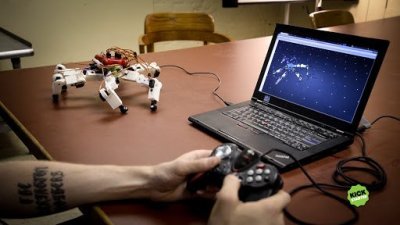Electric cars are all the rage lately, but let’s not forget about the old standby – internal combustion. The modern internal combustion engine is a marvel of engineering. Today’s engines and surrounding systems have better power, greater fuel economy, and lower emissions than anything that has come before. Centuries’ worth of engineering hours have gone into improving every aspect of the engine – with one notable exception. No automotive manufacturer has been able to eliminate the engine’s camshaft in a piston powered-production vehicle. The irony here is that camless engines are relatively easy to build. The average hacker could modify a small four-stroke engine for camless operation in their workshop. While it wouldn’t be a practical device, it would be a great test bed for experimentation and learning.
Suck, Squeeze, Bang, Blow
 A multi-cylinder gasoline engine is a complex dance. Hundreds of parts must move in synchronicity. Valves open and close, injectors mist fuel, spark plugs fire, and pistons move up and down. All follow the four-stroke “Intake, Compression, Combustion, Exhaust” Otto cycle. The camshaft controls much of this by opening and closing the engine’s spring-loaded intake and exhaust valves. Lobes on the shaft press on tappets which then move the valve stems and the valves themselves. The camshaft itself is driven at half the speed of the crankshaft through timing gears, chains, or a belt. Some valve trains are relatively simple – such as overhead cam engines. Others, such as the cam-in-block design, are more complex, with pushrods, rockers, and other parts required to translate the movement of the cam lobe to movement at the valve.
A multi-cylinder gasoline engine is a complex dance. Hundreds of parts must move in synchronicity. Valves open and close, injectors mist fuel, spark plugs fire, and pistons move up and down. All follow the four-stroke “Intake, Compression, Combustion, Exhaust” Otto cycle. The camshaft controls much of this by opening and closing the engine’s spring-loaded intake and exhaust valves. Lobes on the shaft press on tappets which then move the valve stems and the valves themselves. The camshaft itself is driven at half the speed of the crankshaft through timing gears, chains, or a belt. Some valve trains are relatively simple – such as overhead cam engines. Others, such as the cam-in-block design, are more complex, with pushrods, rockers, and other parts required to translate the movement of the cam lobe to movement at the valve.
Exactly when, and how fast a valve opens is determined by the profile of the cam lobe. Auto racing and performance enthusiasts often change camshafts to those with more aggressive profiles and different timing offsets depending on the engine’s requirements. Everything comes at a cost though. A camshaft machined for maximum power generally won’t idle well and will make the engine harder to start. Too aggressive a lobe profile can lead to valve float, where the valves never fully seat at high RPM.
Myriad Solutions
 Engine manufacturers have spent years working around the limitations of the camshaft. The results are myriad proprietary solutions. Honda has VTEC, short for Variable Valve Timing and Lift Electronic Control. Toyota has VVT-i. BMW has VANOS, Ford has VCT. All these systems provide ways to adjust the valve action to some degree. VANOS works by allowing the camshaft to slightly rotate a few degrees relative to its normal timing, similar to moving a tooth or two on the timing chain. While these systems do work, they tend to be mechanically complex, and expensive to repair.
Engine manufacturers have spent years working around the limitations of the camshaft. The results are myriad proprietary solutions. Honda has VTEC, short for Variable Valve Timing and Lift Electronic Control. Toyota has VVT-i. BMW has VANOS, Ford has VCT. All these systems provide ways to adjust the valve action to some degree. VANOS works by allowing the camshaft to slightly rotate a few degrees relative to its normal timing, similar to moving a tooth or two on the timing chain. While these systems do work, they tend to be mechanically complex, and expensive to repair.
The simple solution would be to go with a camless engine. This would mean eliminating the camshaft, timing belt, and most of the associated hardware. Solenoids or hydraulic actuators open and close the valves in an infinitely variable number of ways. Valves can even be held open indefinitely, effectively shutting down a cylinder when max power isn’t necessary.
So why aren’t we all driving camless engines? There are a few reasons. The advantages of camless engines to camshaft engines are analogous to the advantages of electronic fuel injection (EFI) vs carburetors. At the core, a fuel injector is a solenoid controlled valve. The fuel pump provides constant pressure. The engine control unit (ECU) fires the injectors at just the right time to inject fuel into the cylinders.The computer also leaves the valves open long enough so that the right amount of fuel is injected for the current throttle position. Electronically this is very similar to what would be required for a camless engine. So what gives?

Hackers in their 30’s and beyond will remember that until the late 1970’s and early 1980’s, the carburetor was king. Companies had been experimenting with EFI since the 1950’s. The system didn’t become mainstream until the stiff pollution laws of the 70’s came into effect. Making a clean, fuel-efficient carbureted engine was possible, but there were so many mechanical and electronic actuators required that the EFI was a better alternative. So the laws of the 70’s effectively regulated carburetors out of existence. We’re looking at much the same thing with camless engines. What’s missing are the regulations to force the issue.
All the big manufacturers have experimented with the camless concept. The best effort to date has been from Freevalve, a subsidiary of Koenigsegg. They have a prototype engine running in a Saab. LaunchPoint Technologies have uploaded videos showing some impressive actuator designs LaunchPoint is working with voice coils, the same technology which moves the heads in your hard drive.
None of this means that you can’t have a camless engine now – companies like Wärtsilä and Man have engines commercially available. However, these are giant diesel engines used to drive large ships or generate power. Not exactly what you’d want to put in a your subcompact car! For the hacker set, the best way to get your hands on a camless engine today is to hack one yourself.
Ladies and gentlemen, start hack your engines!
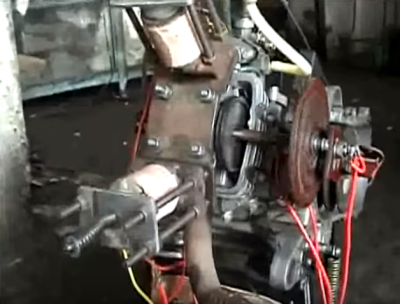 Simple, single-cylinder camless engines are relatively easy to build. Start with a four stroke overhead valve engine from a snowblower, scooter, or the like. Make sure the engine is a non-interference model. This means that it is physically impossible for the valves to crash into the pistons. Add a power source and some solenoids. From there it’s just a matter of creating a control system. Examples are all over the internet. [Sukhjit Singh Banga] built this engine as part of a college project. The control system is a mechanical wheel with electric contacts, similar to a distributor cap and rotor system. [bbaldwin1987’s] Camless Engine Capstone project at West Virginia University uses a microcontroller to operate the solenoids. Note that this project uses two solenoids – one to open and one to close the valve. The engine doesn’t need to rely on a spring for closure. [Brian Miller] also built a camless engine for college, in this case Brigham Young University Idaho Camless Engine. [Brian’s] engine uses hall effect sensors on the original camshaft to fire the solenoids. This route is an excellent stepping stone before making the jump to full electronic control.
Simple, single-cylinder camless engines are relatively easy to build. Start with a four stroke overhead valve engine from a snowblower, scooter, or the like. Make sure the engine is a non-interference model. This means that it is physically impossible for the valves to crash into the pistons. Add a power source and some solenoids. From there it’s just a matter of creating a control system. Examples are all over the internet. [Sukhjit Singh Banga] built this engine as part of a college project. The control system is a mechanical wheel with electric contacts, similar to a distributor cap and rotor system. [bbaldwin1987’s] Camless Engine Capstone project at West Virginia University uses a microcontroller to operate the solenoids. Note that this project uses two solenoids – one to open and one to close the valve. The engine doesn’t need to rely on a spring for closure. [Brian Miller] also built a camless engine for college, in this case Brigham Young University Idaho Camless Engine. [Brian’s] engine uses hall effect sensors on the original camshaft to fire the solenoids. This route is an excellent stepping stone before making the jump to full electronic control.
It wouldn’t take much work to expand these projects to a multi-cylinder engine. All we’re waiting for is the right hacker to take up the challenge!




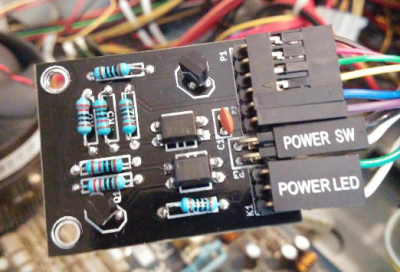

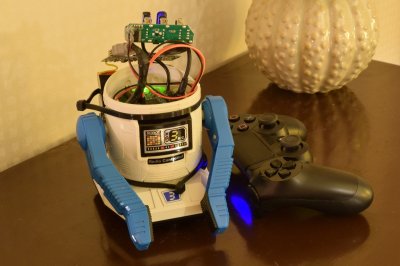

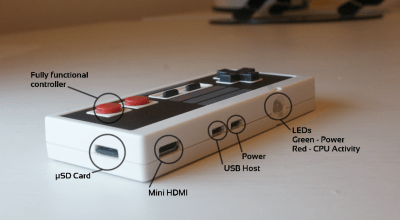
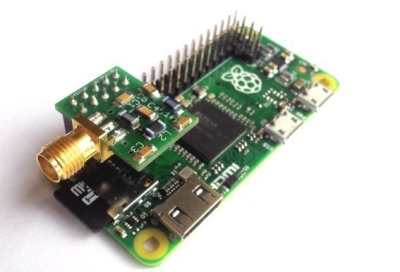
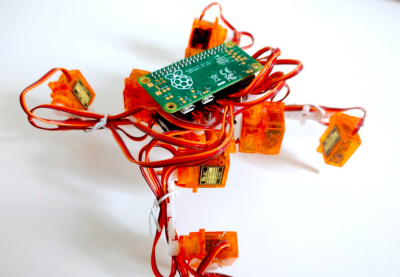


 On the morning of September 26th, 2013 the city of Orlando was rocked by an explosion. Buildings shook, windows rattled, and Amtrak service on a nearby track was halted. TV stations broke in with special reports. The dispatched helicopters didn’t find fire and brimstone, but they did find a building with one wall blown out. The building was located at 47 West Jefferson Street. For most this was just another news day, but a few die-hard fans recognized the building as Creative Engineering, home to a different kind of explosion: The Rock-afire Explosion.
On the morning of September 26th, 2013 the city of Orlando was rocked by an explosion. Buildings shook, windows rattled, and Amtrak service on a nearby track was halted. TV stations broke in with special reports. The dispatched helicopters didn’t find fire and brimstone, but they did find a building with one wall blown out. The building was located at 47 West Jefferson Street. For most this was just another news day, but a few die-hard fans recognized the building as Creative Engineering, home to a different kind of explosion: The Rock-afire Explosion. Many of us have heard of the Rock-afire Explosion, the animatronic band which graced the stage of ShowBiz pizza from 1980 through 1990. For those not in the know, the band was created by the inventor of Whac-A-Mole, [Aaron Fechter], engineer, entrepreneur and owner of Creative Engineering. When ShowBiz pizza sold to Chuck E. Cheese, the Rock-afire Explosion characters were replaced with Chuck E. and friends. Creative Engineering lost its biggest customer. Once over 300 employees, the company was again reduced to just [Aaron]. He owned the building which housed the company, a 38,000 square foot shop and warehouse. Rather than sell the shop and remaining hardware, [Aaron] kept working there alone. Most of the building remained as it had in the 1980’s. Tools placed down by artisans on their last day of work remained, slowly gathering dust.
Many of us have heard of the Rock-afire Explosion, the animatronic band which graced the stage of ShowBiz pizza from 1980 through 1990. For those not in the know, the band was created by the inventor of Whac-A-Mole, [Aaron Fechter], engineer, entrepreneur and owner of Creative Engineering. When ShowBiz pizza sold to Chuck E. Cheese, the Rock-afire Explosion characters were replaced with Chuck E. and friends. Creative Engineering lost its biggest customer. Once over 300 employees, the company was again reduced to just [Aaron]. He owned the building which housed the company, a 38,000 square foot shop and warehouse. Rather than sell the shop and remaining hardware, [Aaron] kept working there alone. Most of the building remained as it had in the 1980’s. Tools placed down by artisans on their last day of work remained, slowly gathering dust.
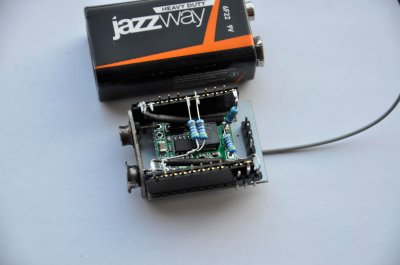
 [Rand] fixed the problem by adding a second ESP8266 module. The first is the listener. It listens for WiFi access points. Once an AP is found, it sends this information to the second jammer” module via a unidirectional single line serial link. The jammer module pumps out deauth packets at full speed. He even managed to create a single executable which performs as both listener and jammer. At boot, the software sends out a series 0xFF bytes through the serial port. The listener has its serial transmit pin directly connected to the jammer’s serial receive line. When the jammer receives the 0xFF bytes, it jumps into the correct function. This was more than enough to kick that pesky Android phone off the network. As with the original article, we have to stress that you should only use modules like these for testing on your own equipment. Be careful out there folks!
[Rand] fixed the problem by adding a second ESP8266 module. The first is the listener. It listens for WiFi access points. Once an AP is found, it sends this information to the second jammer” module via a unidirectional single line serial link. The jammer module pumps out deauth packets at full speed. He even managed to create a single executable which performs as both listener and jammer. At boot, the software sends out a series 0xFF bytes through the serial port. The listener has its serial transmit pin directly connected to the jammer’s serial receive line. When the jammer receives the 0xFF bytes, it jumps into the correct function. This was more than enough to kick that pesky Android phone off the network. As with the original article, we have to stress that you should only use modules like these for testing on your own equipment. Be careful out there folks!